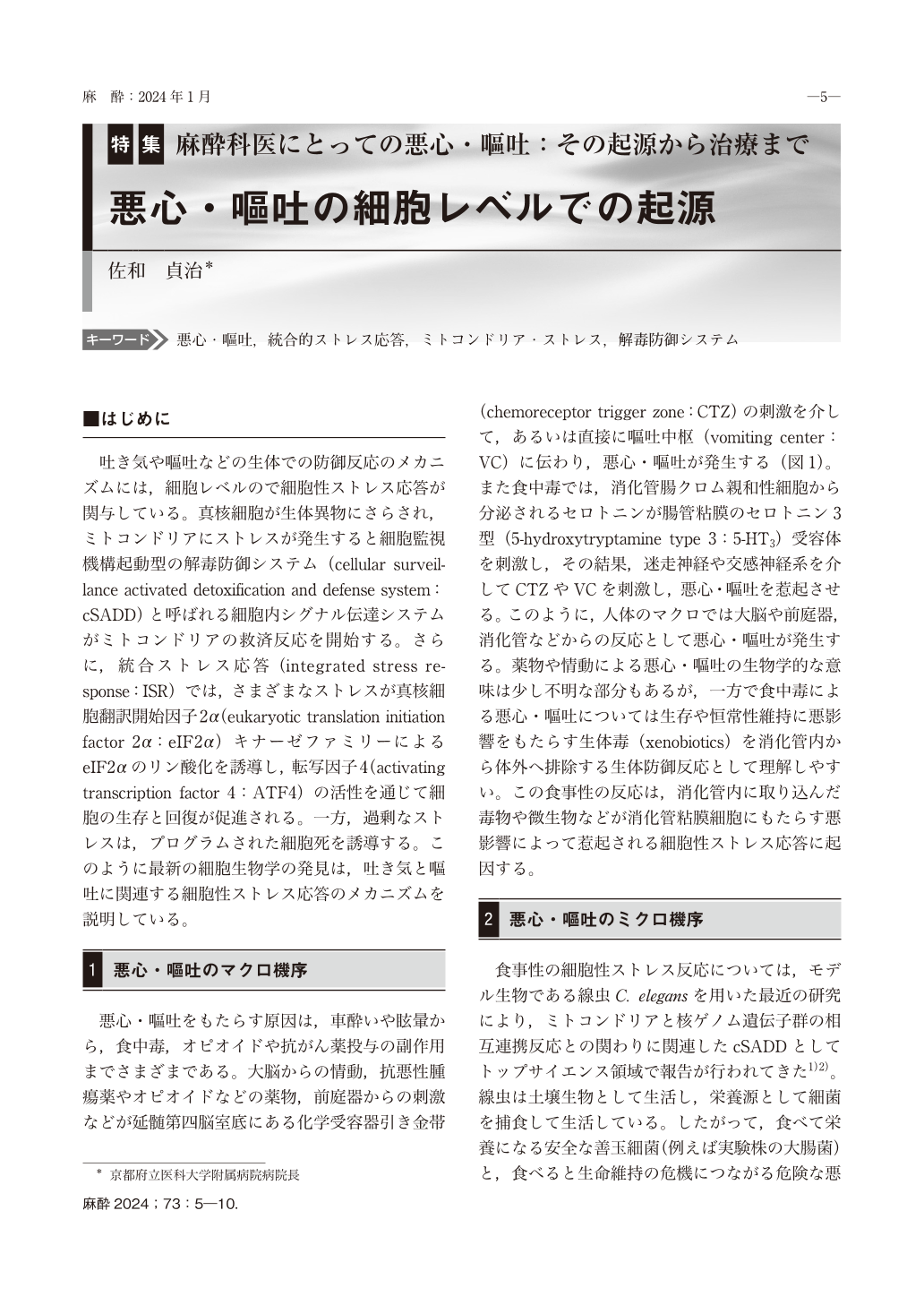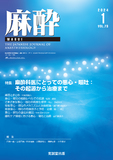Japanese
English
- 有料閲覧
- Abstract 文献概要
- 1ページ目 Look Inside
- 参考文献 Reference
はじめに
吐き気や嘔吐などの生体での防御反応のメカニズムには,細胞レベルので細胞性ストレス応答が関与している。真核細胞が生体異物にさらされ,ミトコンドリアにストレスが発生すると細胞監視機構起動型の解毒防御システム(cellular surveillance activated detoxification and defense system:cSADD)と呼ばれる細胞内シグナル伝達システムがミトコンドリアの救済反応を開始する。さらに,統合ストレス応答(integrated stress response:ISR)では,さまざまなストレスが真核細胞翻訳開始因子2α(eukaryotic translation initiation factor 2α:eIF2α)キナーゼファミリーによるeIF2αのリン酸化を誘導し,転写因子4(activating transcription factor 4:ATF4)の活性を通じて細胞の生存と回復が促進される。一方,過剰なストレスは,プログラムされた細胞死を誘導する。このように最新の細胞生物学の発見は,吐き気と嘔吐に関連する細胞性ストレス応答のメカニズムを説明している。
Cell-mediated stress responses are involved in the mechanism of host defense reactions such as nausea and vomiting, as shown by studies using the model organism nematode. When a eukaryotic cell is exposed to xenobiotics, an intracellular signaling system called the ‘cellular surveillance-activated detoxification and defense system(cSADD)’ communicates to the genome of the cell nucleus, resulting in stress on the mitochondria. Activating transcription factor associated with stress(ATFS)-1 in nematode cells and ATF5 in mammalian cells play an essential role in this mechanism. In the integrated stress response, various stressors such as amino-acid deficiency, viral infection, anemia, and endoplasmic reticulum stress induce the phosphorylation of eukaryotic initiation factor(eIF)2α by one of four proteins of the eIF2α kinase family. In turn, eIF2α phosphorylation allows the translation of selected genes including activating transcription factor(ATF)4, which activates >400 genes associated with the host defense reaction while reducing overall protein synthesis and aiding cell survival and recovery. Excessive stress induces programmed cell death to minimize stress damage. The latest life science findings have thus reinforced the mechanisms of cell-mediated stress responses associated with nausea and vomiting.

Copyright © 2024 KOKUSEIDO CO., LTD. All Rights Reserved.


